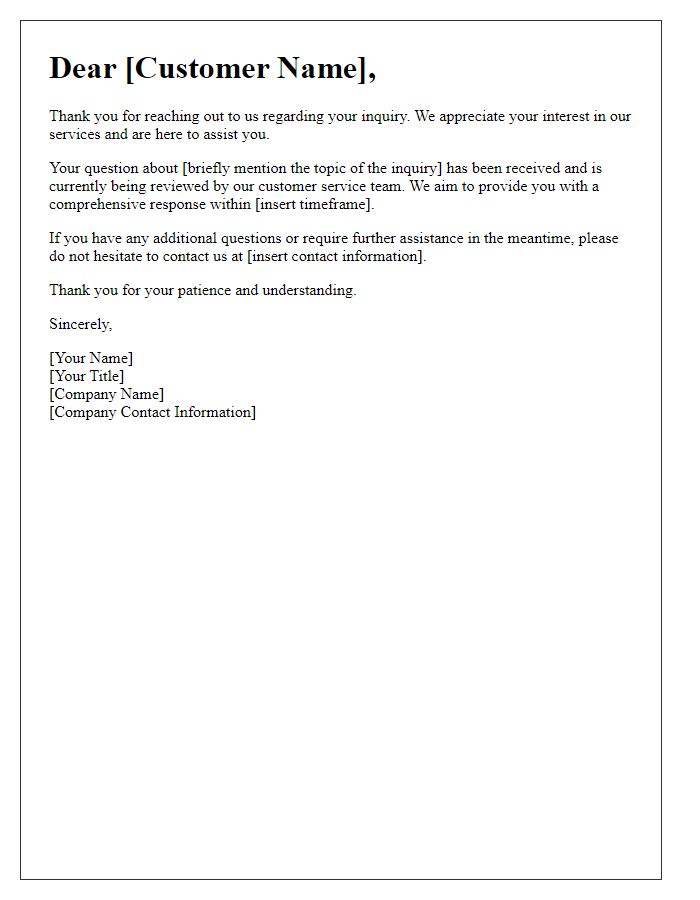When it comes to addressing customer complaints, effective communication is key to fostering trust and understanding. A well-structured letter template can streamline the resolution process, making it easier for both the business and the customer to express their concerns and find a solution. By focusing on empathy and clarity, these templates not only acknowledge the issue but also demonstrate a commitment to customer satisfaction. Curious to learn more about crafting the perfect complaint resolution letter?

Professional greeting and acknowledgment
The process of handling customer complaints effectively begins with a professional greeting that sets a respectful tone. Acknowledging the customer's concerns is essential to validate their feelings and establish a connection. Expressing gratitude for bringing the issue to your attention emphasizes the importance of their feedback. This initial interaction is crucial in facilitating a resolution, as it demonstrates empathy and a commitment to addressing the customer's needs promptly and satisfactorily.
Clear explanation of the issue
When a customer experiences a shipping delay, it can lead to frustration due to the anticipation of receiving their order. For example, if a customer placed an order for a new smartphone from a well-known online retailer like Amazon, which promised delivery within three days, but the package does not arrive until ten days later, this discrepancy can cause inconvenience. A lack of communication from the retailer regarding the status of the shipment could exacerbate the situation, leaving the customer unaware of the reasons for the delay. A clear explanation of the issue, including details such as weather-related disruptions in standard shipping routes (e.g., storms in the Midwest), operational challenges at distribution centers, or unforeseen demand, is crucial in addressing the customer's concerns effectively. This transparency can rebuild trust and improve customer satisfaction.
Apology and expression of empathy
Experiencing poor customer service can lead to frustration, especially when expectations are not met. Companies often receive complaints regarding service or product dissatisfaction. An apology is essential, acknowledging the customer's feelings and validating their experience. Showing empathy involves understanding the inconvenience caused, illustrating commitment to rectifying the issue. In this context, addressing specific details, such as order numbers, dates of the incident, or particular product features in question, enhances the resolution process. By demonstrating a willingness to resolve the issue amicably, businesses can foster trust and potentially retain customer loyalty.
Proposed solution and action steps
An effective approach to resolving customer complaints involves a structured response that clearly outlines proposed solutions and actionable steps. In the context of a service industry scenario, such as hospitality, a comprehensive resolution strategy might include a detailed explanation of corrective measures, such as offering a complimentary night's stay (valued at approximately $200) or a significant discount on future bookings (ranging from 20% to 50%). Action steps should clearly delineate the timeline for resolution, such as providing the customer with a dedicated contact point within 24 hours to address their concerns directly and ensuring feedback is collected within one week after the resolution has been implemented. This proactive approach not only addresses the immediate grievance but also reinforces customer loyalty through transparency and accountability.
Contact information for further assistance
Customer complaints often arise in businesses, necessitating a structured resolution approach. Customer service departments, typically within companies such as retail or telecommunications, recognize the significance of prompt responses to improve customer satisfaction. In many cases, customers are encouraged to reach out via available contact information, typically a dedicated phone number (like 1-800-555-0199) or email (such as support@company.com). This process ensures timely assistance, which can include holding times, average resolution timeframes, or even escalation protocols, all aimed at addressing issues efficiently. Key metrics such as response rates (often targeted at 90% within 24 hours) and first-contact resolution (FCR) rates further underscore the importance of effective communication in customer service.













Comments